Whether it’s a new family member, a new home, or a new neighborhood, there are plenty of reasons to get a security system. But traditional, professionally monitored systems aren’t your only option.
Self-monitored security systems put the control in your hands. From installation to responding to alarms, it’s all up to you. The best self-monitored security systems come with basic devices like sensors, a base station, and optional cameras. All you have to do is set it up and monitor your home from the mobile app.
The trick is finding which systems have the right add-ons, monthly rates, and equipment fees to fit your budget. So we took a deep dive into some of our favorite DIY self-monitored home security systems to weigh the pros and cons.
What is a Self-Monitoring Security System?
Security systems involve more than alarms and sensors; someone has to hear them and respond. The big difference between a self-monitored and a professionally monitored system is who answers the call.
When the alarm on a self-monitored system sounds, it sends an alert to the owner’s mobile app. Alerts can come from motion sensors, contact sensors, cameras, and other devices. The next step is up to the user. From the mobile app on most self-monitored home systems, users can speak through cameras, see footage, or call the authorities.
On the other hand, professionally monitored systems send alerts to a monitoring station where a trained professional assesses the situation over the phone. These monitoring professionals can help you decide whether the threat is enough to call the authorities and patch you through if needed.
The good news is both options can keep your home safe. But the best choice depends on how often you check your security system app and how well you respond to an emergency. For many users, there are a few signs that a DIY self-monitored home security system could be for you.
Pros of Self-Monitoring Home Security
Here are a few perks the best self-monitored home security systems bring to the table.
No or Low Monthly Fees
You don’t have to pay someone to monitor your system if you do it yourself. Some systems like Nest, Abode, or Wyze allow you to get away with a one-time equipment fee. But the best self-monitored systems aren’t always the cheapest.
Some require a minimal level of commitment like financing or a self-monitoring fee. Scout, for example, charges $10 for the Always On plan that basically covers the app.
Others such as Ring or Canary offer optional paid perks like stored video footage. Without these subscriptions, you could be limited to only a few minutes of footage to review.
Even if you’re going with a basic system like Wyze, it’s good to read the fine print to make sure you won’t get any surprises on your bank statement each month.
No Middleman
When the sensors on a professionally monitored system trigger, the alert goes to a monitoring center. From there, trained professionals contact you or call emergency responders.
Self-monitored systems cut out the middleman, allowing you to assess the situation yourself. That means if your dog triggers the alarm or your kids come home early, you won’t have to worry about a nonemergency causing stress.
No False Alarm Penalties
In some cities, false alarms that involve the police or fire crews can come with a fine. The best self-monitored security systems allow you to screen the situation before you call first responders.
Easy Portability
Self-monitored home security systems are ideal for renters because they’re easy to move from home to home. They’re easy to install and don’t have a monitoring center that needs to know your new address. Self-monitored systems are usually smaller, making them a good fit for apartments, condos, and townhouses.
Flexible Configuration
If you change your mind about your security system, self-monitored home security is easier to upgrade, cancel, or change. Plus, there’s no high-pressure sales rep to talk to when you call to cancel or make changes to your plan.
Cons of Self-Monitoring Home Security
No Backup
With a self-monitored system, you’re in control of your alarm system, even during an emergency. Professionally monitored systems watch your home 24/7, so if something goes wrong, you’ll hear about it. Without that extra backup, you might not know about an event if your system loses cellular services or you miss an alarm.
Limited Connection
The connection with your security system is only as reliable as your phone. “Dead zones,” software crashes, and battery failures can cut your connection to your security system. If you lose cell service while traveling or your battery dies, your security system can’t tell you if something happens.
No Equipment or Installation Assistance
Many professionally monitored systems are also professionally installed. These technicians install your system and help out if something malfunctions. If you set up your self-monitored system incorrectly, you might not realize it until a problem arises. And if a product malfunctions, the helpline may be your only option.
No Fail-Safe Option
Most professionally monitored systems come equipped with a fail-safe code. It enables you to turn off the alarm’s siren but still sends a distress signal to the monitoring service for help. The duress signal is there in case an armed intruder forces you to disarm your security system. The feature lets you call for help without tipping off the intruder. Self-monitored systems don’t have this feature.
Added Stress
If you’ve ever been in an emergency, you know how much it helps to have someone with a level head calling the shots. With a professionally monitored system, once your alarm goes off, you’ll get a phone call from someone with emergency training. With a self-monitored system, you’re on your own.
Best Self-Monitoring Home Security Systems
If you’re curious about a self-monitored system, here are a few of the best self-monitored products around.
| Minimum Equipment Price |
| Pro Monitoring Option |
| What We Love |
| What Can Improve |
| Wyze | Abode | Canary | Google Nest | Scout |
 |
 |
 |
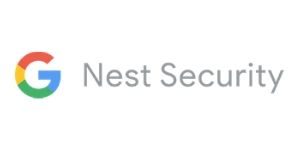 |
 |
| $19.99 | $179 | $99 | $399 | $229 |
| No X |
Yes ✓ |
No X |
Yes ✓ |
Yes ✓ |
| Unbeatable price | Low price and simple setup | Camera variety | Multiple arm and disarm options | Custom or Starter kit available |
| Few outdoor security options | Limited app abilities | No sensors | Pricey equipment | Make the app free |
| Read Review | Read Review | Read Review | Read Review | Read Review |
Amazon.com prices as of 02/07/20 11:49 pm MST. See full disclaimer.
Our Pick: Wyze
Wyze is the scrappy newcomer with unbeatable prices for its equipment. A starter kit costs only $20 and includes a motion sensor and door and window sensors. You can also buy cameras, locks, smart plugs, and lights for under $30.
Its low prices make Wyze a low-risk opportunity if you’re curious about smart home or home security basics. And while it doesn’t offer professional monitoring or outdoor cameras or sensors yet, we still think Wyze is worth watching in the coming years.
Read our full review of Wyze Sense to learn more.
Abode
Abode has several kits and levels of service available, but it costs $179 to get started with a new system. The basic starter kit comes with a Gateway hub, motion sensor, key fob, and mini door sensor.
A security system this small is a good fit for small apartments or renters of all types. Abode only requires a one-time equipment fee and uses an app to set up and control your system. Of all the kits available, we like the Iota kit most. It’s easy to set up and includes a camera, door sensor, and fob for $219.
If you like Abode but want professional monitoring, it’s available for an extra $100. The good news is it’s a one-time fee, so you won’t have to worry about month-to-month payments.
Read our full review of Abode to learn more
Canary
Canary is a camera-only security system. You can add up to 4 devices to your network to keep an eye on your home inside and out. They come with features like person detection and video clips for when you want to check in on your house.
The cheapest Canary camera, The View, costs $99 and shoots in 1080p HD video, has automatic night vision, and is compatible with Amazon Alexa and Google Assistant. There’s also the Pro camera with a built-in air quality monitor, making it a fitting choice for nurseries and kids’ rooms.
And while Canary doesn’t have professional monitoring available, you can pay $9.99/mo for extra perks like a safety button, two-way talk, and incident report services.
Read our full review of Canary to learn more.
Nest Secure
Nest Secure’s price is high but brings a lot to the table. The basic Secure kit comes with a Nest Guard hub, Nest Detect sensors, Nest Tag key fob, and the Nest App. The base station comes with Google Assistant built in and has multiple ways for arming and disarming the alarm.
Even the door and window sensors have cool features. At night or low lights, they glow to light your way around the house (or to the fridge for a midnight snack) They also chime every time they trigger, so you know when someone comes in and out of your house.
Like other self-monitored systems, you get security alerts and call the police through the app. You can also add other Nest products like cameras, thermostats, and the Protect smoke and CO alarm to your system from your phone.
While professional monitoring isn’t available directly through Nest, you can get it through Brinks if you want some backup for your system.
Read our full review of Nest Secure to learn more.
Scout
Scout self-monitoring security lets you choose a starter kit or build a system from scratch. This company offers a wide selection of devices such as a video doorbell, camera, and environmental sensors for smoke, water, and broken glass.
The cheapest system costs $229, but you still need to pay for the app at $9.99 per month. If there’s room in your budget, professional monitoring is available for a little bit more.
Read our full review of Scout to learn more.
Self-Monitoring Security System FAQs
What are the best self-monitored security devices?
Start your self-monitored security system with security cameras armed with motion detection. You’ll be able to see what triggers alerts from your phone when emergencies strike.
The best security cameras have features like two-way talk and night vision. So whether it’s an intruder or your teen coming in late, you’ll be able to see what’s going on and speak with anyone on the other side.
Other Useful Sensors
Door and window sensors are small enough to put on anything that opens and closes. Entrances and windows are the obvious choice, but they can fit on other areas like medicine or liquor cabinets to keep out curious kids.
Alarms and sirens are a classic way to scare off intruders. Many self-monitored home systems allow you to sound the alarm from a mobile app.
Motion detectors have varying sensitivity, meaning they can be set off by different sized objects. If you have a large pet or kids, a motion detector is a good sensor to have to keep them out of rooms or areas you don’t want them in. They’re also handy around entrances so you know when someone’s home (or not supposed to be).
How can I avoid false alarms?
Test your alarms and keep the batteries fresh, make sure your contact and motion sensors are securely on the wall, and wipe down camera lenses to avoid blurry footage and false positives.
And train everyone in your household on how to use the system. It’s easy for someone to trigger the alarm if they don’t know how it works.
Can I monitor individual security devices without an entire home security system?
Yes. Many companies offer multiple products that connect to a single smartphone app, so you can purchase devices individually and add them to the mobile app as you go.
Video doorbells, for example, aren’t attached to an alarm system. Instead, they have motion-activated video recording that alerts you when someone rings your doorbell. Many doorbell cameras let you talk to the person at your door, which can scare off a possible intruder.
We recommend testing the waters with a smart doorbell or smart lock if you’re not sure whether self-monitoring is right for you.
Can you monitor your own security system without a smartphone?
Some systems do offer internet monitoring through a PC or Mac, but most companies are phasing it out in favor of smartphone monitoring apps.
Can my friends or family help with monitoring?
Yes, and we recommend it. Choose trusted friends, family members, or neighbors to receive security alerts for your system, so you’re not the only one handling any potential alarms.
Can I finance my security system equipment?
Not often. One reason professionally monitored security systems use contracts is to spread out the cost of your security system equipment. Companies will bundle your equipment payments with your monthly monitoring fee to give you a standard monthly payment. With a self-monitored system, it’s more likely you’ll have to pay for your equipment upfront.
Can I monitor SimpliSafe myself?
No, all the packages require professional monitoring of some kind. You can choose between the Standard (about $15/month) or Interactive (about $25/month) packages. But you’ll need professional monitoring if you want a SimpliSafe system.
Read our full SimpliSafe review for more information.
Does an ADT system work without monitoring?
No, ADT is generally a professionally installed and professionally monitored system. Our ADT review goes more in depth about the company’s monitoring policies and prices.
What is the Best Self-Monitoring Security System?
Whether you live in an apartment, condo, or large home, a self-monitored security system simplifies home security. But most systems (professionally or self-monitored) tend to come with up-front costs or some kind of optional add-on.
If you want a self-monitored home system without monthly payments and don’t care to tack on extras like video history, Wyze is our choice.
All of Wyze’s cameras shoot in HD and are easy to set up. The sensor packs suit small spaces better, but you can purchase additional sensors for a home for less money than a night at the movies.
Related Pages on SafeWise
Disclaimer
*Amazon.com list price as of 02/07/20 11:49 pm MST. Product prices and availability are accurate as of the date/time indicated and are subject to change. Any price and availability information displayed on Amazon at the time of purchase will apply to the purchase of this product. Safewise.com utilizes paid Amazon links.
Certain content that appears on this site comes from Amazon. This content is provided “as is” and is subject to change or removal at any time.
The post Pros and Cons of Self-Monitoring Home Security Systems appeared first on SafeWise.
from Blog – SafeWise https://ift.tt/2mv7j4B
via IFTTT
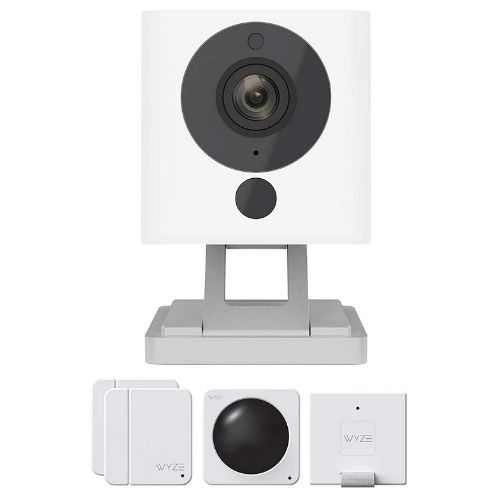
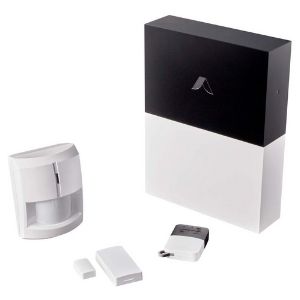

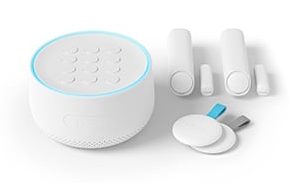
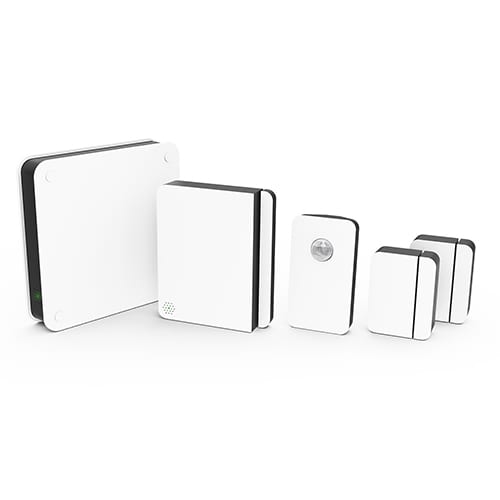
No comments:
Post a Comment